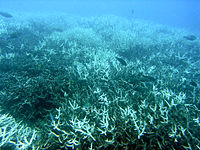
Biological Nutrients Removal Performance under Starvation Stress: Efficacy Deterioration and Recovery.
Sign Up to like & getrecommendations! Published in 2022 at "Bioresource technology"
DOI: 10.1016/j.biortech.2022.126977
Abstract: Biological nutrients removal performance affected by starvation stress was investigated via the addition of pre-anoxic stage to SBR. COD removal efficiency maintained at around 90% regardless of the starvation stress. Starvation stress presented significant impact… read more here.
Keywords: starvation stress; recovery; removal; biological nutrients ... See more keywords

Survival Characteristics and Transcriptomic Analyses Reveal the Adaptive Response of the Aquatic Pathogen Non-O1/O139 Vibrio cholerae to Starvation Stress
Sign Up to like & getrecommendations! Published in 2022 at "Microbiology Spectrum"
DOI: 10.1128/spectrum.01939-21
Abstract: Non-O1/O139 V. cholerae is a causal agent of vibriosis that can be subject to nutrient insufficiency and cause high rates of mortality in aquatic animals. However, its molecular mechanisms of survival in response to starvation… read more here.
Keywords: starvation stress; o139 cholerae; stress; non o139 ... See more keywords

Survival, Virulent Characteristics, and Transcriptomic Analyses of the Pathogenic Vibrio anguillarum Under Starvation Stress
Sign Up to like & getrecommendations! Published in 2018 at "Frontiers in Cellular and Infection Microbiology"
DOI: 10.3389/fcimb.2018.00389
Abstract: Many bacteria have developed strategies for metamorphosis into sophisticated survival forms to survive extended periods of environmental stress. As a global causative agent of vibriosis in marine fish farming, Vibrio anguillarum (V. anguillarum) can efficiently… read more here.
Keywords: significantly regulated; vibrio anguillarum; stress; anguillarum ... See more keywords

Investigation of the Molecular Mechanisms of Antioxidant Damage and Immune Response Downregulation in Liver of Coilia nasus Under Starvation Stress
Sign Up to like & getrecommendations! Published in 2021 at "Frontiers in Endocrinology"
DOI: 10.3389/fendo.2021.622315
Abstract: Commercial fishing of estuarine tapertail anchovy (Coilia nasus), an important anadromous fish species in the Yangtze River of China, has been prohibited due to the serious damage overfishing has caused to the wild population. Research… read more here.
Keywords: starvation; response; coilia nasus; liver ... See more keywords

The microbiota changes of the brown dog tick, Rhipicephalus sanguineus under starvation stress
Sign Up to like & getrecommendations! Published in 2022 at "Frontiers in Physiology"
DOI: 10.3389/fphys.2022.932130
Abstract: Rhipicephalus sanguineus, the brown dog tick, is the most widespread tick in the world and a predominant vector of multiple pathogens affecting wild and domestic animals. There is an increasing interest in understanding the role… read more here.
Keywords: stress; brown dog; rhipicephalus sanguineus; dog tick ... See more keywords